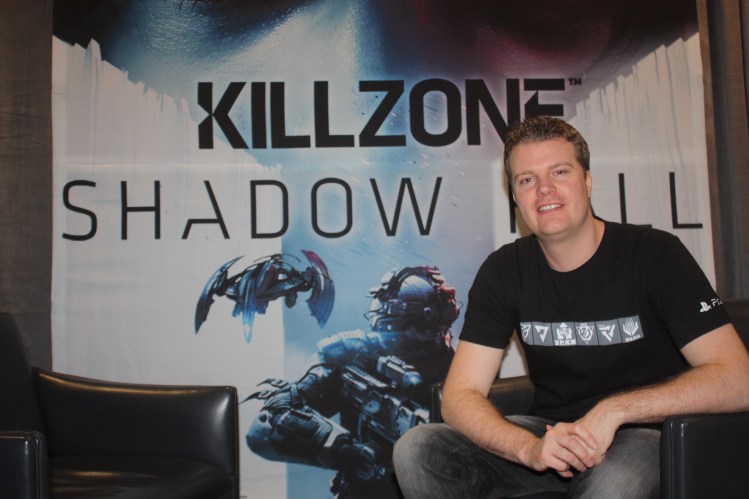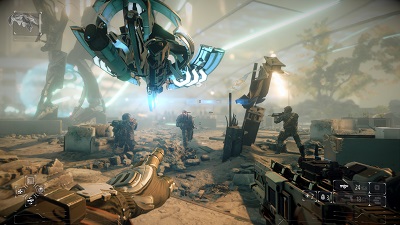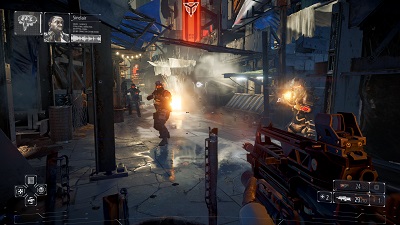GamesBeat: There’s a lot of spies and lone wolves making their way around this kind of war, then.
Boltjes: Correct, yeah. That’s part of the main core of the game. You yourself aren’t really a spy, but you’re a kind of intelligence soldier, a recon soldier. We call it a Shadow Marshal. You act in the shadows and perform deniable ops. But the enemy faction, the Helghast, have that as well. It’s a very different theme compared to what we’ve previously done.
GamesBeat: How much choice do you allow for in the single-player, as far as different branches in the story?
Boltjes: It’s still linear in the sense that you go from A to Z in the level. You have a primary objective and you complete it. But within that, there’s wiggle room. There are secondary objectives and optional objectives and things to explore. We always converge back to a bottleneck in the story, but before we do that, we give you a lot of room to figure things out yourself. You can determine the sequence of events before you go back to the main story.
GamesBeat: Do you still have the opportunity for the kind of big firefights you’ve had before?
Boltjes: Yes, definitely. As the story develops, let’s just say that the war does get a little hotter later on in the story. I can’t give too much away, but we do have larger battles. It gets really interesting as you develop through the story.
GamesBeat: A lot of people are very accustomed to shooters. How do you make sure it’s a fresh experience for those players who’ve played a lot of these games before?
Boltjes: Again, it comes back to player choice. We want to give players so many options during gameplay that they could play every encounter again, and if they use different options and different abilities each time, it could play out differently. If you see two people playing the same level, it will look different, because someone might be using shields and playing defensive, or they’re going on the offensive or maneuvering more. That keeps it fresh for us. Adding that kind of depth through abilities and giving the player more choice, that sets us apart.
GamesBeat: What are people going to notice about the PS4’s capabilities here?
Boltjes: Well, I hope people think it’s really beautiful. [Laughs] I’ll let them judge that for themselves. But it also allows us to create a more varied experience. For me, as a game designer, the PlayStation 4 has allowed me to put more enemy types, more objects, and more weapons into one specific encounter. That creates more variety, and that will shine through.
GamesBeat: Some designers have liked putting a lot of destruction into games lately. Is that something you’ve experimented with?
Boltjes: Definitely. One of the encounters you play here, all the walls are destructible. That gives you a way in to defended areas. Instead of going through the front door, where they’re waiting for you, you can blow through the wall and flank them. Again, it’s up to you.
GamesBeat: How did you reach this number of 24 players in multiplayer? Why is that optimal?
Boltjes: It’s not optimal in the sense that it works for every game. It really depends on what type of warzone you want to build. If you want to play a more tactical type of game, where people move slower and think about their actions, fewer players is better, and so we wanted to support that. You can play six on six or eight on eight. But some people like the really frantic, chaotic feel with more players to fight against, so we created the option for up to 24 players, 12 on 12. You’ll see, within the scope of all the different custom warzones, different numbers popping up and creating very different experiences.
VentureBeat's mission is to be a digital town square for technical decision-makers to gain knowledge about transformative enterprise technology and transact. Learn More



